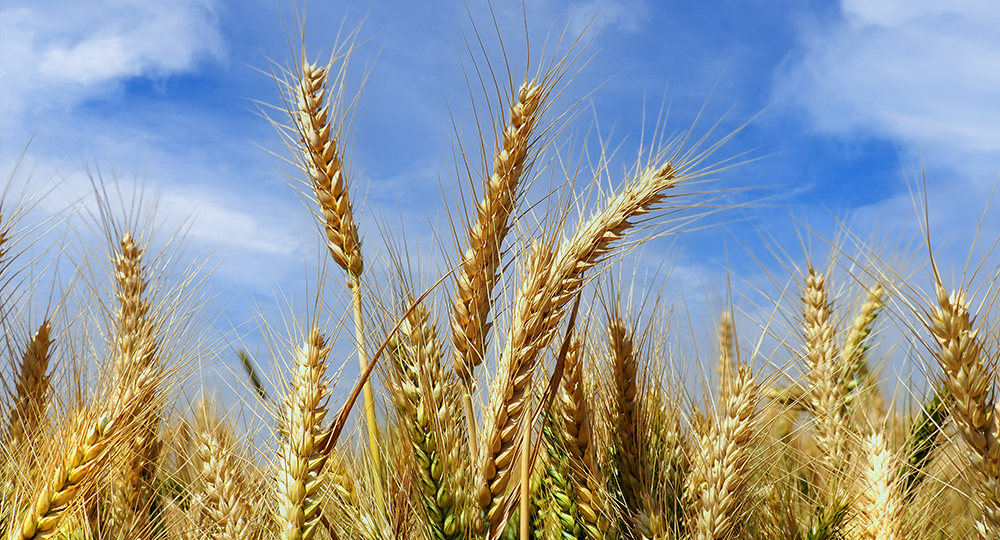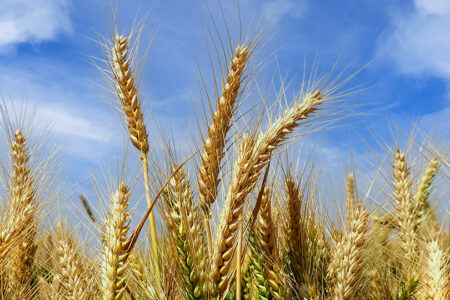The Four Faces of Shavuot
A harvest festival and birthday all rolled into one
Have you ever gone to the grocery store and found the shelves empty? Until the recent pandemic, that would have been an odd experience for most of us because when we want strawberries, we can buy strawberries. When we want apples, we can buy apples. In most Western societies, technology has released us from depending on the natural cycle of planting and harvesting.
In ancient Israel, life wasn’t that way. The Israelites were intimately connected to the agricultural cycle. Not only was fresh fruit unavailable most of the year, but if the weather didn’t cooperate or a war or blight destroyed the fields, people went hungry.
It’s no wonder God commanded Israel to celebrate His annual harvest provision. In Hebrew, that celebration is called Shavuot, or “weeks.”
Actually, Shavuot goes by many names. In the Hebrew Scriptures it is called the Feast of Weeks (Ex. 34:22) and the Feast of Harvest (23:16); and in the New Testament, it’s called by the Greek word for “fiftieth”—Pentecost (Acts 2:1). It is also the day of firstfruits (Num. 28:26).
The history of Shavuot is multifaceted as well. It is a holiday with three different faces. Four, for believers in Messiah Jesus.
Face 1: The Wave Offering
The Torah (Law) commanded the Israelites to make a wave offering at the Temple on the Feast of Unleavened Bread (Lev. 23:11). Even though that wave offering was connected to the Passover week, in a sense it was also part of the celebration of Shavuot because it was an offering of firstfruits from the harvest. Shavuot comes 50 days, or seven Sabbaths, after Passover (v. 16).
As part of the Passover celebration, a special delegation of priests went into the fields near Jerusalem to harvest a portion of barley from the very first of the new barley crop that ripened in the spring, around Passover. In fact, God said no one anywhere was to eat from the new spring crop until this sacrifice was made. It was literally the firstfruits of the harvest season. Then the barley was ground and sifted as many as 13 times and prepared for sacrificial offering, probably on Sunday, the first day after the Sabbath following Passover.
Early that Sunday morning, a priest would take the grain in a basket and wave it in front of the altar in the Temple before burning a handful as prescribed in Leviticus 23. This day marked the beginning of the counting of the omer, as the people meticulously counted off each of the 49 days from Passover to Shavuot, during which the first harvests of barley and wheat were reaped. (An omer was an ancient measure of grain.)
This was a time of celebration and giving thanks to God that another harvest had arrived. However, since the destruction of the second Temple in AD 70, Jewish people have observed these days as a time of partial mourning.
Face 2: The Feast of Weeks
Shavuot itself was celebrated on the 50th day from the beginning of the counting of the omer. God prescribed that seven Sabbaths were to pass; and on the next day, another harvest celebration was to be held in Jerusalem.
This marked the second time each year all Jewish men were to travel to Jerusalem to sacrifice to God. They were to bring an offering of the firstfruits of their own crops, including a grain offering of the first of their wheat. This offering also could include other crops, such as grapes, figs, and olive oil.
People would bring their contributions in baskets and offer them at the Temple by waving them before the altar. The priests also would sacrifice lambs and a goat for sin and fellowship, along with another wave offering of two baked loaves of bread made from the newly harvested wheat.
No one was allowed to eat any bread or grain from the wheat harvest until the wave offering was made at the Temple. This offering and the first wave offering bookended the period of firstfruits.
Every year thousands of Israelites ascended to Jerusalem at Shavuot to make their sacrifices. And since the offering was from their first available food, their offerings were statements of faith that God would continue to provide the rest of the harvest for another year.
Face 3: The Birth of Israel
Shavuot also has another interesting face today. Everything changed when the Temple was destroyed in AD 70. How could Jewish people obey the Torah’s commands to sacrifice if the place where God commanded the sacrifices be performed no longer existed?
Like many Levitical prescriptions, Shavuot was altered by the rabbis over the centuries in an attempt to obey God despite the Temple’s absence.
The rabbis calculated that after the Exodus from Egypt, the day on which God originally delivered the Law to Israel at Mount Sinai must have been Shavuot. Consequently, the holiday became a celebration of Torah and the birth of Israel as a nation, rather than an agricultural celebration to thank God for providing the harvest. Even today, Jewish people celebrate Shavuot as Judaism’s birthday; and the counting of the omer is, in part, a celebration of God giving them His Law.
Many synagogues read the book of Ruth on Shavuot because Ruth, a Moabitess, came to Israel during the barley harvest; and Jewish legend says Ruth’s great grandson, King David, died on Shavuot.
Face 4: The Birth of the Church
Christians know Shavuot by its Greek name, Pentecost. Acts 2 says the streets of Jerusalem were packed with Jews from “every nation under heaven” (v. 5) and lists 15 people groups and districts.
Why were Jews from so many parts of the known world in Jerusalem that day? Because they had come to make their firstfruits offering at the Temple, as commanded in the Torah.
Scripture says the disciples were together “in one place” (v. 1), possibly a house. They may have been hiding there because Jesus had instructed them “not to depart from Jerusalem, but to wait for the Promise of the Father” (1:4). It’s also possible the Greek term for “place” is a first-century colloquialism for the Temple.
Consider how the story changes if the disciples actually were sitting on the Temple steps, surrounded by thousands of Jews carrying their baskets of firstfruits, celebrating God’s provision of a harvest. The rushing wind of the Holy Spirit indwelling them would have been heard by everyone as God entered the hearts of believers, who “began to speak with other tongues, as the Spirit gave them utterance. And when this sound occurred, the multitude came together, and were confused, because everyone heard them speak in his own language” (2:4, 6).
God spoke through them in every language to reap the firstfruits harvest of the church, about 3,000 souls (v. 41). What a birthday for the church!
Jesus on Shavuot
We can relate the Jewish spring holidays to Jesus’ activities leading up to Pentecost.
On the night Jesus was betrayed, He celebrated Passover with His disciples. He was nailed to the cross at the time of the morning sacrifice in the Temple. He died declaring “It is finished” when the Passover lamb was sacrificed in the Temple. He rested in the grave on the Sabbath of Unleavened Bread. And early in the morning, on the day after the Sabbath, probably while the firstfruits offering was being waved before the Lord in the Temple courts, Jesus became the firstborn from the dead as He burst from His grave.
Jesus’ resurrection was the first “bookend” of the firstfruits of God’s harvest of resurrection. At the very moment the priests were waving the bread sacrifice to celebrate the close of the spring harvest of firstfruits, God completed the firstfruits harvest of resurrection by spiritually bringing to life the first souls of the church at Pentecost. Jesus’ resurrection and the church’s birth were God’s firstfruits of the harvest of new life out of death.
Shavuot, then and now, celebrates God’s provision for people who trust Him to provide unfailingly. But it also celebrates new life through the indwelling Holy Spirit, as well as resurrection from the dead.









I love to study how the Jewish Festivals correlate to Jesus it’s amazing !
I read that many believe the Law was given to Moses on this day. The Law was given and 3,000 died. But on the Shavuot after the death and resurrection of Christ 3,000 found life in Him. That just amazes me.
The Law was given not anymore than the new 3rd month is correct because of the time it took to cross the red sea from Mitzrayim and then the trek through the start of the wilderness thru the dead sea or Negev. Moses only got to ascend the mountain at the end of his life and יהוה showed him everything He created and that is truly Israel and my Maker’s true glory forever and ever. Shalom Aleikem.